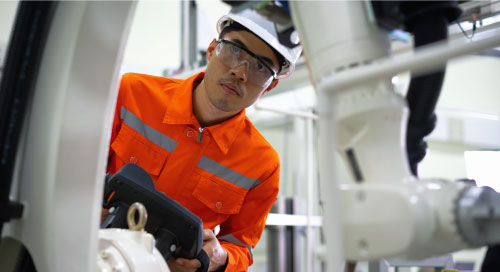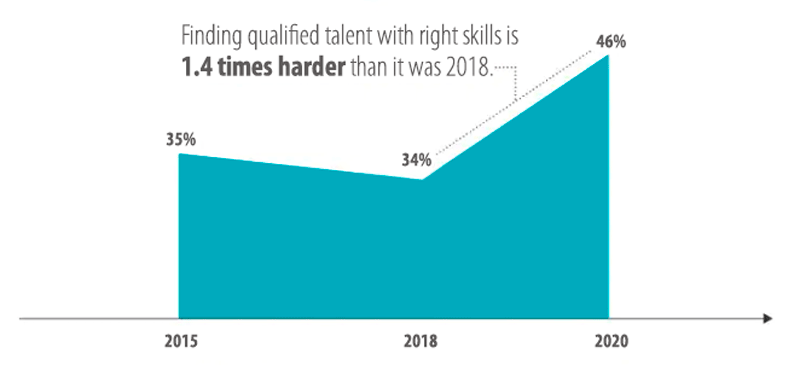AI and CV Detect Production Problems Before They Happen

Digital transformation is becoming more important than ever as manufacturers continue to feel the ripple effects of COVID-19. Before the pandemic, companies were already struggling to find experienced operators to manage the shop floor. With social distancing and a limit on the number of workers that can be in the room at one time, manual operations have become that much more difficult.
Factories must start implementing advanced technologies such as artificial intelligence (AI) to automate operations and be able to access equipment remotely.
“One of the biggest challenges for manufacturers today is being able to accurately detect potential failures and issues in equipment or products,” says Saito Akihiro, Group Manager of the Business Development Group, Business Development Department and Technology Division at Okaya Electronics, a manufacturing solutions distributor.
It’s imperative that manufacturers regularly maintain machines to catch any unusual behaviors or patterns before they become a bigger issue. When unexpected equipment failure halts production, costs soar, and margins shrink.
The same is true when product defects go undetected. Materials and even finished goods may need to be scrapped or customers could receive flawed merchandise.
“Manufacturers need to ensure the entire production line is always operating efficiently,” says Akihiro. But the problem is that in many cases these tasks are still a manual process and require highly advanced and specialized skills from experienced technicians.
Typically, technicians can detect equipment anomalies or product defects just by looking at or listening to machinery. But this comes with two potential drawbacks.
First, since the process relies on human judgment, the results vary depending on the individual.
Second, the number of technicians with this highly specialized knowledge is diminishing. A recent report from the consulting firm Deloitte found that there will be an estimated 2.1 million open manufacturing positions to fill by 2030 (Figure 1).

The impact of not being able to fill jobs will result in a manufacturer’s inability to implement new technology, respond to the changing market, maintain production levels, and improve growth.
AI-Enabled Product Quality Inspection
AI and machine learning (ML) are key tools in addressing these challenges, by automatically detecting problematic equipment, and more accurately predicting necessary maintenance or replacement. As a result, operators can focus on more valuable tasks.
For example, a major Japanese auto parts manufacturer was finding that its manual product inspection process was resulting in inconsistent and inaccurate results. It decided to leverage an AI-driven anomaly detection solution to automate the process. As a result, the company was able to not only improve quality but also increase inspection to as many as six products simultaneously, according to Akihiro.
The manufacturer achieved these results by deploying the Impulse solution, a platform based on software from AI company Brains Technology—named a Gartner Cool Vendor for performance analysis and AIOps.
End-to-end solutions like Impulse will be game changing for companies that do not have the in-house skills to develop and deploy the latest #technologies required for agile #manufacturing practices. via @insightdottech
Okaya packages Impulse into a kit ready for proof of concept (PoC) or production environments, with an edge computer and the Brains Technology software. The kit features vision and imaging sensors for data collection, AI and ML models for pattern and anomaly detection, and Intel® processors for high performance and efficiency.
As an aggregator, Okaya makes it easier for SIs to provide IIoT solutions like AI-driven anomaly detection to their existing customers. And the company’s services—from logistics to integration to technical support—free up SIs to focus on winning new customers as well.
Making Sense of the Data
“Impulse can also automatically analyze and detect patterns from data without human intervention,” Akihiro explains. “This is especially important as the amount of data being made available from equipment and automated product inspection is becoming overwhelming to manage and extract insights.”
For instance, one Japanese-based company already had undergone some predictive maintenance efforts to collect and analyze equipment sensor data but was still using human operators to find and uncover valuable insights. This was becoming too complex to manage manually.
It wanted a platform that could quickly analyze time-series data and extract abnormalities based on that information.
The company conducted a proof of concept using equipment sensor data for two months to verify whether Impulse could uncover unusual behaviors before they became an issue. It found the solution was able to do this accurately and shorten the time it was taking to analyze the data previously. The company plans to use the Impulse solution for various other IoT data analyses in the future.
Democratizing AI for Anomaly Detection
Impulse includes an auto-modeling function that can create anomaly detection models using manufacturers’ still image and video data. This means that SIs and end users can easily create their own models by inputting digital data for analysis.
A global engineering and construction company that specializes in environment, energy, and social infrastructure technologies recently leveraged Impulse because of the platform’s ability to build AI models without programming knowledge. The company was not only able to detect abnormalities with Impulse, but take proactive measures such as a planned shutdown because of their findings.
End-to-end solutions like Impulse will be game changing for companies that do not have the in-house skills to develop and deploy the latest technologies required for agile manufacturing practices. AI, machine learning, and computer vision are the key for manufacturers to be more nimble, spot problems on the line, and resolve QA problems before they happen.